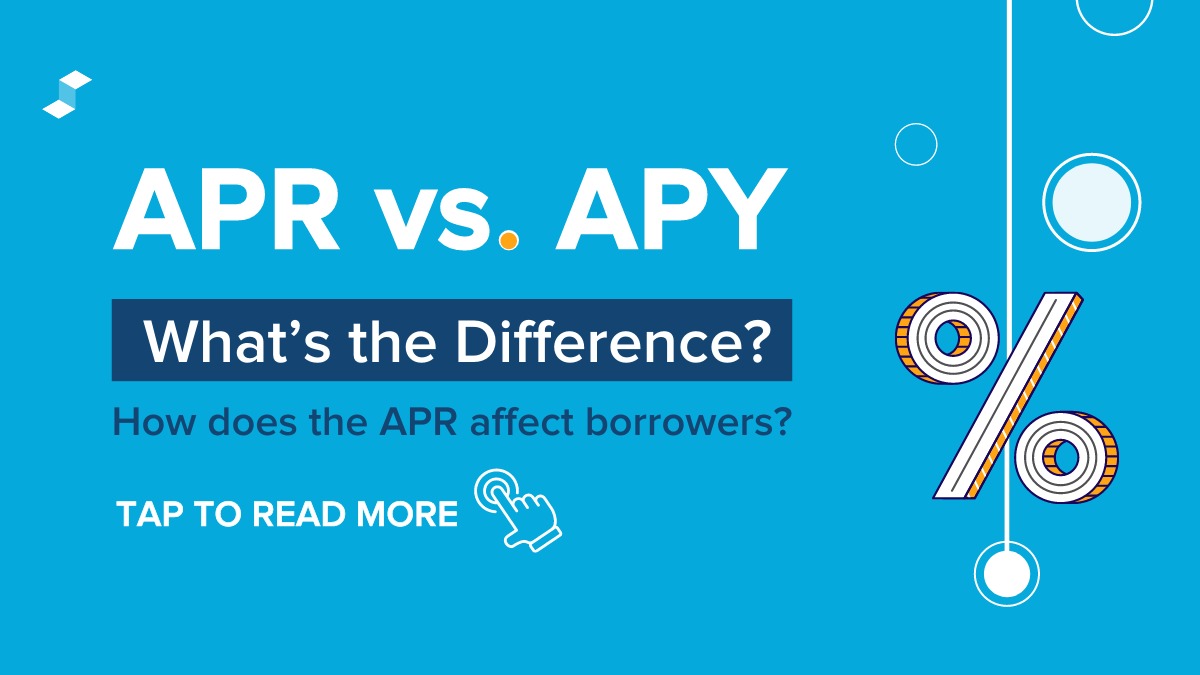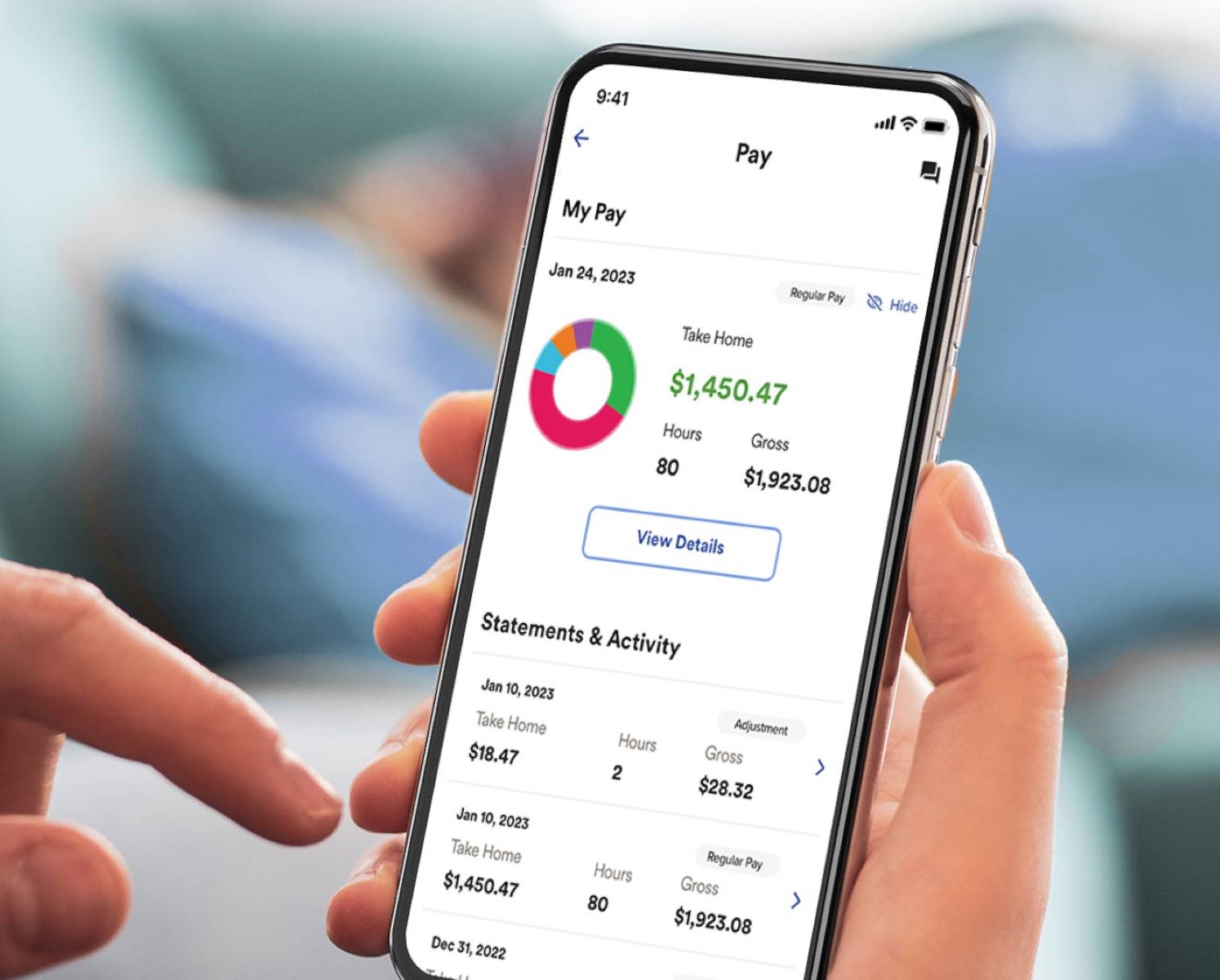Home>Finance>Why Is It A Good Idea To Compare The APR On Different Revolving Credit Cards?


Finance
Why Is It A Good Idea To Compare The APR On Different Revolving Credit Cards?
Published: February 29, 2024
Compare the APR on revolving credit cards to make informed financial decisions. Find the best rates and save money with our finance comparison tool.
(Many of the links in this article redirect to a specific reviewed product. Your purchase of these products through affiliate links helps to generate commission for LiveWell, at no extra cost. Learn more)
Table of Contents
Introduction
Revolving credit cards are a ubiquitous financial tool, offering consumers the flexibility to make purchases and carry a balance from month to month. One of the key factors to consider when evaluating revolving credit cards is the Annual Percentage Rate (APR). The APR represents the cost of borrowing on the card, including interest and fees, and plays a pivotal role in determining the overall expense of carrying a balance. In this article, we will delve into the significance of comparing the APR on different revolving credit cards, shedding light on why this practice is essential for making informed financial decisions.
Understanding the nuances of APR and its impact on credit card balances is crucial for consumers seeking to manage their finances prudently. By exploring the importance of comparing APR, we aim to empower individuals with the knowledge necessary to navigate the complex landscape of credit card offerings. Additionally, we will outline the key factors to consider when comparing APR and elucidate the benefits of conducting such comparisons. Through this exploration, readers will gain valuable insights into optimizing their credit card choices and minimizing the cost of borrowing.
Join us on this enlightening journey as we unravel the intricacies of APR and unveil the compelling reasons why comparing the APR on different revolving credit cards is a prudent financial strategy. Let's embark on this exploration of financial empowerment and equip ourselves with the tools to make informed and advantageous credit card decisions.
Understanding APR
Annual Percentage Rate (APR) is a critical component of any revolving credit card agreement, encompassing the annual cost of borrowing funds. It serves as a comprehensive metric that encapsulates not only the interest charged on outstanding balances but also any additional fees associated with the credit card. Essentially, the APR provides a standardized method for comparing the cost of borrowing across different credit cards, enabling consumers to make informed decisions based on the total expense of carrying a balance.
When evaluating the APR on a credit card, it is imperative to comprehend the various components that contribute to this metric. In addition to the nominal interest rate, the APR may encompass additional charges such as annual fees, balance transfer fees, cash advance fees, and penalty fees. By considering the APR as a holistic indicator of borrowing costs, consumers can gain a comprehensive understanding of the financial implications associated with a particular credit card.
Moreover, it is essential to recognize that the APR is not solely indicative of the interest rate applied to the outstanding balance. Instead, it represents the total cost of borrowing over the course of a year, expressed as a percentage. This inclusive approach provides consumers with a clear and standardized basis for comparing the financial implications of different credit card offers, facilitating informed decision-making.
By grasping the multifaceted nature of APR, consumers can make astute financial choices, aligning their credit card selections with their individual needs and financial objectives. Understanding the intricacies of APR empowers individuals to navigate the realm of revolving credit cards with confidence, enabling them to optimize their borrowing costs and effectively manage their financial resources.
Importance of Comparing APR on Revolving Credit Cards
Comparing the Annual Percentage Rates (APRs) of different revolving credit cards is of paramount importance for individuals seeking to make prudent financial decisions. The APR serves as a comprehensive indicator of the cost of borrowing on a credit card, encompassing not only the interest rate but also various fees associated with the card. By evaluating and comparing the APRs of different credit cards, consumers can gain valuable insights into the true cost of carrying a balance and make informed choices that align with their financial goals.
One of the primary reasons why comparing APRs is crucial is the potential impact on the overall expense of carrying a balance. Even seemingly minor differences in APR can translate into substantial disparities in the total interest paid over time. By identifying credit cards with lower APRs, individuals can minimize the long-term cost of carrying a balance, thereby optimizing their financial resources and mitigating unnecessary expenses.
Furthermore, comparing APRs enables consumers to assess the relative competitiveness of different credit card offers. In a landscape abundant with diverse credit card products, conducting a thorough comparison of APRs empowers individuals to identify cards that offer favorable borrowing terms. This process facilitates a nuanced evaluation of the financial benefits and drawbacks associated with each credit card, allowing consumers to select the most advantageous option based on their unique financial circumstances.
Moreover, the practice of comparing APRs fosters financial prudence and informed decision-making. By gaining a comprehensive understanding of the borrowing costs associated with various credit cards, consumers can make conscientious choices that align with their budgetary constraints and financial objectives. This approach empowers individuals to exercise greater control over their financial well-being, ensuring that their credit card selections are conducive to their long-term financial stability.
In essence, the importance of comparing APRs on revolving credit cards lies in its capacity to enable consumers to make well-informed and financially advantageous decisions. By leveraging the insights derived from comparing APRs, individuals can optimize their credit card choices, minimize borrowing costs, and navigate the realm of revolving credit with confidence and prudence.
Factors to Consider When Comparing APR
When embarking on the process of comparing Annual Percentage Rates (APRs) on different revolving credit cards, several key factors warrant careful consideration. By evaluating these factors, consumers can make informed and astute decisions regarding their credit card selections, ensuring that their choices align with their financial objectives and preferences.
- Introductory APR Offers: Many credit cards feature introductory APR offers, providing a lower or even 0% APR for an initial period. It is essential to assess the duration of the introductory period and the subsequent APR that will apply, as this can significantly impact the overall cost of borrowing.
- Standard APR: Understanding the standard APR that applies once the introductory period concludes is crucial. This rate will dictate the long-term cost of carrying a balance and should be carefully compared across different credit card offerings.
- Variable vs. Fixed APR: Some credit cards feature variable APRs, which fluctuate based on market conditions, while others offer fixed APRs. Evaluating the implications of variable and fixed APRs is essential, as it can affect the predictability of borrowing costs.
- Additional Fees: Beyond the nominal interest rate, it is imperative to consider any additional fees associated with the credit card, such as annual fees, balance transfer fees, cash advance fees, and late payment fees. These fees can contribute significantly to the overall cost of borrowing and should be factored into the comparison.
- Creditworthiness: The APR offered by credit card issuers is often contingent on the applicant’s creditworthiness. Individuals with strong credit profiles may qualify for lower APRs, while those with less favorable credit histories may face higher rates. Understanding the relationship between creditworthiness and APR is essential when comparing credit card offers.
- Rewards and Benefits: Some credit cards offer rewards programs, cashback incentives, or additional benefits. When comparing APRs, it is important to weigh the potential rewards against the borrowing costs, ensuring that the overall value proposition of the credit card is aligned with the cardholder’s preferences and financial goals.
By carefully considering these factors when comparing APRs on revolving credit cards, consumers can gain a comprehensive understanding of the borrowing costs, terms, and potential benefits associated with each credit card. This informed approach empowers individuals to make credit card selections that are well-suited to their financial circumstances and conducive to their long-term financial well-being.
Benefits of Comparing APR on Different Revolving Credit Cards
Engaging in a thorough comparison of Annual Percentage Rates (APRs) on different revolving credit cards offers a multitude of benefits, empowering consumers to make informed and advantageous financial decisions. By evaluating and contrasting the APRs of various credit card offerings, individuals can unlock significant advantages that contribute to their financial well-being and long-term stability.
- Cost Savings: One of the primary benefits of comparing APRs is the potential for substantial cost savings. Identifying credit cards with lower APRs can result in reduced interest expenses over time, translating into tangible savings for cardholders who carry a balance from month to month.
- Financial Prudence: Comparing APRs fosters a culture of financial prudence and conscientious decision-making. By gaining insights into the borrowing costs associated with different credit cards, consumers can make choices that align with their budgetary constraints and long-term financial objectives, thereby promoting responsible financial management.
- Optimized Borrowing Costs: Through the process of comparing APRs, individuals can optimize their borrowing costs by selecting credit cards with favorable terms. This strategic approach enables cardholders to minimize the expense of carrying a balance, ensuring that their financial resources are utilized efficiently and judiciously.
- Informed Decision-Making: Comparing APRs empowers consumers with the knowledge necessary to make informed decisions about their credit card selections. By evaluating the borrowing costs, terms, and potential benefits of different credit cards, individuals can make choices that are aligned with their unique financial circumstances and preferences, thus enhancing their overall satisfaction and financial well-being.
- Competitive Advantage: Armed with a comprehensive understanding of APRs, consumers can identify credit cards that offer competitive borrowing terms, rewards, and benefits. This positions individuals to leverage the most advantageous credit card offers available, maximizing the value derived from their financial transactions and expenditures.
- Long-Term Financial Stability: By selecting credit cards with favorable APRs and terms, individuals can contribute to their long-term financial stability. Minimizing borrowing costs and optimizing the value proposition of credit cards through informed comparisons enables consumers to bolster their financial resilience and lay the groundwork for a secure financial future.
Ultimately, the benefits of comparing APRs on different revolving credit cards extend beyond immediate cost considerations, encompassing broader implications for financial prudence, informed decision-making, and long-term stability. This practice empowers individuals to navigate the realm of credit cards with confidence and discernment, ensuring that their financial choices are aligned with their aspirations and conducive to their overall financial well-being.
Conclusion
As we conclude our exploration of the Annual Percentage Rate (APR) and the significance of comparing APRs on different revolving credit cards, it becomes evident that this practice is integral to making informed and advantageous financial decisions. The APR serves as a comprehensive metric, encapsulating the cost of borrowing on a credit card, and comparing APRs empowers consumers to navigate the complex landscape of credit card offerings with prudence and insight.
By understanding the nuances of APR and its impact on borrowing costs, individuals can make astute credit card selections that align with their financial objectives. The process of comparing APRs enables consumers to identify credit cards with favorable borrowing terms, potentially resulting in substantial cost savings and optimized borrowing costs over time. Moreover, this practice fosters financial prudence, informed decision-making, and the cultivation of long-term financial stability.
Key factors, such as introductory APR offers, standard APR, the nature of the APR (variable or fixed), additional fees, creditworthiness considerations, and potential rewards and benefits, warrant careful consideration when comparing APRs. By evaluating these factors, consumers can gain a holistic understanding of the borrowing costs, terms, and potential benefits associated with each credit card, ensuring that their selections are well-suited to their individual needs and preferences.
Ultimately, the benefits of comparing APRs extend beyond immediate cost considerations, encompassing broader implications for financial well-being and resilience. This practice positions individuals to make informed and advantageous credit card choices, optimizing their borrowing costs and contributing to their long-term financial stability.
As we equip ourselves with the knowledge and insights derived from comparing APRs, we embark on a journey of financial empowerment and prudence. By leveraging this understanding, individuals can navigate the realm of revolving credit cards with confidence, ensuring that their financial choices are aligned with their aspirations and conducive to their overall financial well-being.














